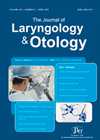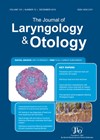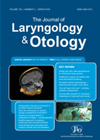
Journal Reviews
Correlation between middle ear and mastoid volumes with results of type 1 paediatric tympanoplasty
This is a retrospective study of 45 paediatric patients, aged between eight and 18 years, who underwent Type 1 cartilage graft tympanoplasty using conchal cartilage. Middle ear and mastoid volumes of these children were correlated with anatomical and functional outcomes...
A comparison between trainee and trainer outcomes in mastoid surgery
In this era where training faces restrictions due to theatre time, fewer sessions available to trainees and requirements of consultant-led and consultant-delivered services, one unit confirmed that myringoplasties given to trainees reduced from 34.2% to 16%. This study compares outcomes...
Is canal wall down with obliteration a useful compromise between canal wall up procedure and open mastoid cavities?
Controversy has raged for many years between open mastoid cavity procedures and canal wall up techniques in terms of postoperative recidivism and ear discharge. It is generally believed that canal wall up procedures can miss hidden cholesteatoma but preserve useful...
Evidence based outcomes for canal wall up, canal wall down and subsequent canal wall reconstruction for primary cholesteatoma
There has been a long standing controversy over whether to treat primary cholesteatoma with open or closed technique. The general consensus is that limited disease can be treated with closed technique whereas the canal wall down approach helps reduce recidivism...
Robot controlled mastoid surgery!
This is a fascinating piece of work by a Korean team developing a human-robot collaborative control. Their model uses image guidance surgery to locate the drill tip’s position. Important structures can be highlighted – in this case the facial nerve....









